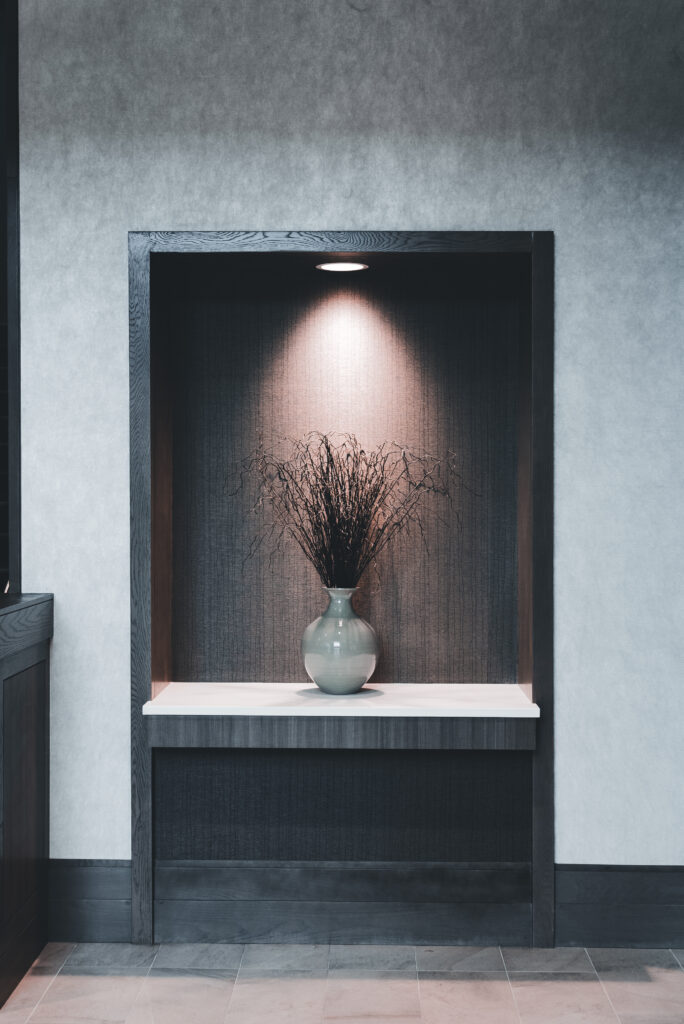How Do I Prioritize Home Improvements For Safety In 2023?
October 5, 2023 | by Geralt Soon

In order to ensure a safe and secure home in 2023, it is crucial to prioritize and plan your home improvement projects effectively. By focusing on safety-related upgrades, you can create a living environment that is not only comfortable but also provides peace of mind for you and your loved ones. Whether it’s updating your home’s security systems, addressing potential fire hazards, or improving accessibility for elderly family members, it’s important to approach these projects with careful consideration and diligence. In this article, we’ll guide you through the process of prioritizing home improvements for safety in the coming year, offering practical tips and expert advice to help you create a haven within your own four walls. So let’s dive in and get started on making your home a safer place to live!
How Do I Prioritize Home Improvements for Safety in 2023?

1. Conduct a Home Safety Inspection
When it comes to prioritizing home improvements for safety in 2023, conducting a comprehensive home safety inspection should be at the top of your list. By thoroughly evaluating the exterior and interior of your home, as well as identifying potential hazards, you can gain a better understanding of the areas that require attention.
1.1 Evaluate the Exterior
Start by inspecting the exterior of your home. Look for any signs of damage or deterioration, such as cracks in the foundation, loose or missing shingles on the roof, or rotting wood on the siding. Addressing these issues promptly will not only improve the safety of your home but also prevent further damage in the long run.
1.2 Assess the Interior
Next, move on to assessing the interior of your home. Check for any signs of water damage, such as stains on the ceiling or walls, which may indicate a leaky roof or plumbing issue. Additionally, inspect the structural elements, such as walls, ceilings, and floors, for any signs of cracks or sagging. Identifying and addressing these issues early on can help prevent costly repairs or accidents down the line.
1.3 Identify Potential Hazards
Lastly, it’s crucial to identify and address any potential hazards in your home. This includes checking for loose handrails or stairs, ensuring that electrical outlets are not overloaded, and securing heavy furniture or appliances to prevent tipping. Don’t forget to inspect your HVAC system and ensure that it is properly maintained and free of any safety concerns. Taking these proactive steps will significantly enhance the safety of your home.
2. Upgrade Emergency Preparedness
In an unpredictable world, being prepared for emergencies is essential. Here are some key steps you can take to upgrade your emergency preparedness and ensure the safety of your household.
2.1 Install Smoke and Carbon Monoxide Detectors
Smoke and carbon monoxide detectors are crucial in alerting you to potential fire or gas hazards. Make sure these detectors are properly installed on every level of your home, including bedrooms and common areas. Regularly test and replace batteries to ensure they are in working order.
2.2 Create a Home Emergency Kit
Putting together a well-stocked home emergency kit is a smart move for any homeowner. Include essentials such as non-perishable food, water, flashlights, batteries, first aid supplies, and a battery-powered radio. It’s also advisable to keep a list of important contacts, including emergency services and family members, readily available.
2.3 Develop an Emergency Plan
A well-defined emergency plan can make all the difference in a crisis situation. Sit down with your family and discuss evacuation routes, designated meeting points, and important contact information. Practice drills regularly to ensure everyone is familiar with the process. Additionally, consider investing in a generator to provide backup power during power outages.
3. Enhance Security Measures
Creating a secure living environment should be a top priority for homeowners. By upgrading your security measures, you can protect your home and loved ones from potential threats.
3.1 Improve Door and Window Locks
Start by reviewing the locks on your doors and windows. Consider upgrading to deadbolt locks, which provide an extra layer of security. Install sturdy strike plates and reinforce doors with longer screws to make them more resistant to forced entry.
3.2 Consider Installing a Security System
Investing in a comprehensive security system is an excellent way to deter burglars and protect your home. Look for systems that include features such as motion sensors, security cameras, and a centralized control panel. Some newer systems even offer smartphone integration for remote monitoring and control.
3.3 Enhance Outdoor Lighting
Well-lit exteriors can discourage potential intruders and make your home safer. Install motion-activated lights near entryways, walkways, and vulnerable areas to provide enhanced visibility at night. Consider using energy-efficient LED lights to save on electricity costs.
4. Improve Fire Safety
Protecting your home against fire hazards is of utmost importance. By implementing these fire safety measures, you can greatly reduce the risk of a devastating fire in your home.
4.1 Ensure Adequate Fire Extinguisher Coverage
Having accessible and properly maintained fire extinguishers is crucial in the event of a fire. Place fire extinguishers on each level of your home, especially in areas prone to fires, such as the kitchen, garage, and workshop. Familiarize yourself with the proper use of fire extinguishers and regularly check their expiration dates.
4.2 Install Fire-Safe Materials
Consider replacing flammable materials in your home with fire-safe alternatives. This includes using fire-resistant roofing materials, such as metal or clay tiles, and installing fire-rated doors and windows. Additionally, ensure that your furniture and upholstery meet fire-resistant standards.
4.3 Practice Fire Safety Measures
Prevention is key when it comes to fire safety. Make sure you have working smoke detectors on every level of your home and regularly test them. Develop a fire escape plan with your family, including multiple routes of escape and a designated meeting point outside. Conduct fire drills to ensure everyone knows what to do in case of a fire.

5. Safeguard Against Falls
Falls are a leading cause of injuries in homes. By implementing these safety measures, you can greatly reduce the risk of falls and create a safer living environment.
5.1 Install Handrails and Grab Bars
Installing handrails along staircases and grab bars in bathrooms can provide much-needed support and stability, especially for individuals with limited mobility or balance issues. Make sure these safety features are securely mounted to prevent accidents.
5.2 Remove Trip Hazards
Identify and remove any potential trip hazards in your home, such as loose rugs, cluttered walkways, or uneven flooring. Secure loose cables and cords to prevent tripping. Keep floors clean and dry, especially in areas prone to spills or moisture.
5.3 Improve Lighting and Visibility
Proper lighting is crucial for preventing falls. Ensure adequate lighting in hallways, staircases, and other high-traffic areas. Consider installing nightlights in bedrooms and bathrooms to provide visibility during nighttime.
6. Upgrade Electrical Systems
Outdated electrical systems can pose serious safety risks. Consider these upgrades to ensure the electrical safety of your home.
6.1 Replace Outdated Wiring
If your home still has outdated knob-and-tube or aluminum wiring, it’s essential to have it replaced by a licensed electrician. Upgrading to modern copper wiring reduces the risk of electrical fires and improves the overall safety of your electrical system.
6.2 Install Ground Fault Circuit Interrupters (GFCIs)
GFCIs are designed to protect against electrical shock by quickly shutting off power in the event of a ground fault or short circuit. Install GFCIs in bathrooms, kitchens, laundry rooms, outdoor outlets, and any other areas where water may be present.
6.3 Upgrade Electrical Panel
If you frequently experience circuit overloads or rely on extension cords and power strips, it may be time to consider upgrading your electrical panel. An updated panel can provide increased capacity and improved safety, reducing the risk of electrical fires and electrical shock.

7. Address Plumbing and Water Safety
Water-related issues can lead to costly repairs and potential health hazards. Take these steps to ensure the plumbing and water safety of your home.
7.1 Inspect and Repair Leaks
Regularly inspect your plumbing system for leaks or signs of water damage. Address any leaks promptly to prevent further damage and the potential growth of mold or mildew. Consider installing leak detection devices for added protection.
7.2 Install Water Shut-Off Valves
Knowing how to quickly and easily shut off the water supply to your home is essential in case of a plumbing emergency, such as a burst pipe. Install main water shut-off valves and individual shut-off valves for fixtures and appliances to minimize potential water damage.
7.3 Upgrade Water Heater and Plumbing Fixtures
If your water heater is old or showing signs of wear, consider replacing it with a newer, more energy-efficient model. Additionally, upgrade plumbing fixtures to low-flow alternatives to conserve water and reduce the risk of leaks.
8. Mitigate Radon and Indoor Air Quality Issues
Radon gas and poor indoor air quality can have detrimental effects on your health. Take these measures to mitigate radon and improve the overall air quality in your home.
8.1 Test for Radon Gas
Radon is a naturally occurring radioactive gas that can seep into homes, especially in areas with high levels of radon in the soil. Test your home for radon using a do-it-yourself kit or hire a professional to perform the test. If elevated levels of radon are detected, consult with a radon mitigation specialist to develop a mitigation plan.
8.2 Improve Ventilation
Proper ventilation is essential in maintaining good indoor air quality. Ensure that your home has adequate ventilation, especially in areas prone to moisture accumulation, such as bathrooms and kitchens. Consider installing exhaust fans in these areas to remove excess humidity and prevent the growth of mold.
8.3 Address Mold and Allergens
Mold and allergens can significantly impact indoor air quality and pose health risks. Regularly inspect your home for signs of mold, such as musty odors or visible growth. Address any moisture issues promptly and consult with a professional if extensive mold remediation is necessary. Additionally, regularly clean and maintain HVAC systems to minimize allergens and improve air circulation.

9. Ensure Structural Integrity
A structurally sound home is vital for the safety and well-being of its occupants. Consider these steps to ensure the structural integrity of your home.
9.1 Inspect for Foundation Issues
Foundation problems, such as cracks or settlement, can compromise the stability of your home. Regularly inspect the foundation for any signs of damage, including cracks in the walls or uneven floors. Consult with a professional if you suspect foundation issues and address them promptly to prevent further damage.
9.2 Evaluate Roof Condition
A well-maintained roof is essential for protecting your home from water damage and maintaining its structural integrity. Inspect your roof regularly for missing or damaged shingles, deteriorating flashing, or sagging areas. Address any issues promptly and consider having a professional inspection if needed.
9.3 Reinforce Structural Elements
If your home has areas that are structurally weak or vulnerable, consider reinforcing them to enhance safety. This may include adding additional support beams, installing hurricane straps in areas prone to strong winds, or reinforcing walls and floors for improved structural stability.
10. Consider Home Accessibility
Creating a home that is accessible to everyone, regardless of age or ability, is not only considerate but also essential for safety. Take these steps to improve home accessibility.
10.1 Install Ramps or Lifts
If you or someone in your household has mobility challenges, consider installing ramps or lifts to provide easy access to entrances and different levels of the home. Ensure that these accessibility features are properly designed and installed to meet safety standards.
10.2 Modify Bathroom and Kitchen for Accessibility
The bathroom and kitchen are areas where accessibility is especially important. Install grab bars near toilets and in shower areas, lower countertops and sinks to accommodate wheelchair users, and consider installing a roll-in shower for improved accessibility. Additionally, ensure that doorways are wide enough to accommodate wheelchairs and walkers.
10.3 Create a Zero-Step Entry
Eliminating steps at entry points can greatly improve accessibility and prevent trip hazards. Consider creating a zero-step entry with flat surfaces or installing a ramp for easy access. This modification benefits not only individuals with mobility challenges but also those carrying heavy items or pushing strollers.
By prioritizing these home improvements for safety in 2023, you can create a secure and healthy living environment for you and your loved ones. Remember, always consult with professionals for expert advice and assistance when tackling major home improvement projects.

RELATED POSTS
View all


